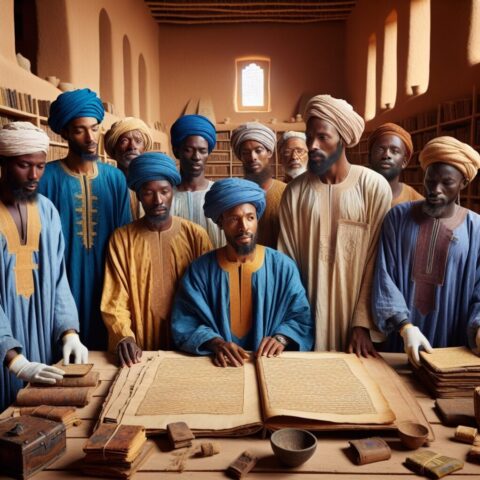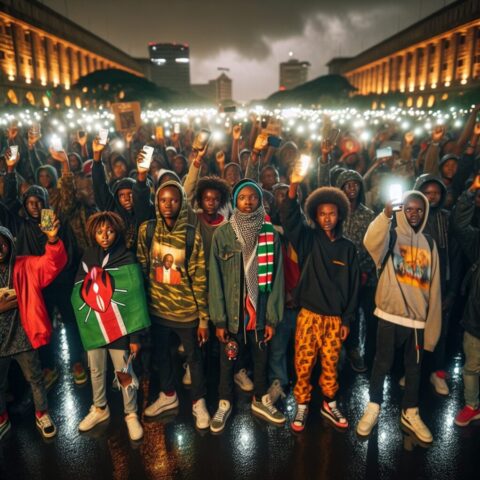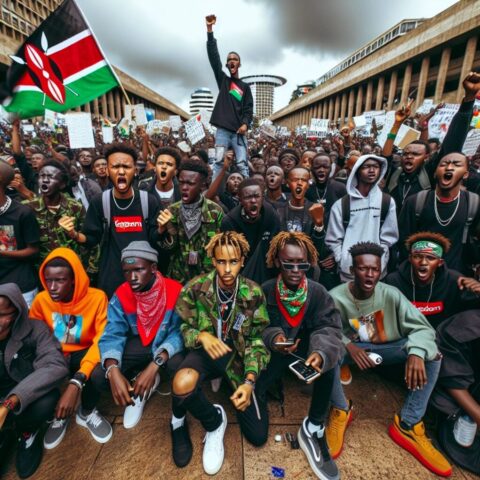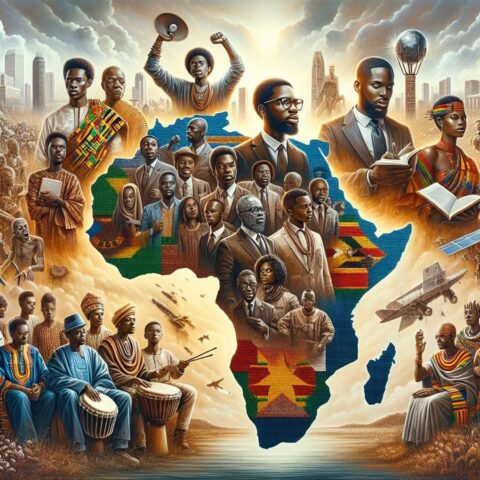Dust to Data: How Timbuktu’s Secret Libraries Escaped War and Went Digital
Hook: Fragile Pages That Outlived Empires
In a city ringed by Sahara and legend, thin folios the color of desert light have survived salt caravans, caliphates, drought, smugglers, and the soft abrasion of human thumbs. Timbuktu’s manuscripts, written in Arabic and Ajami on rag paper and gazelle skin, do not sit on the world’s grand shelves. They lie close to the body of the city, in chests and trunks, inside family libraries that measure time not in years but in copyist hands. These pages have outlived empires. In 2012, when war arrived, they learned to move.
If you came here expecting our usual deep dives into the body and its care, think of this as kin. The same nervous system that remembers touch and scent also remembers words and wisdom. Today, the subject is cultural health, the immune system of memory. It has arteries, risks, and a pulse.
The Night Moves: When Families Became a Network
In spring 2012, as militants took over Timbuktu, scholars, guards, drivers, and cousins built a community network that moved hundreds of thousands of manuscripts out of harm’s way. The work did not announce itself. Boxes were ordinary. Boats were not marked. Conversations were short. The city’s custodial families, who had protected private libraries for generations, read the weather of war the way Sahelian herders read a sand-charged wind, and they acted.
Led by librarians such as Abdel Kader Haidara and the NGO he helped create, SAVAMA-DCI, the network purchased trunks and petty-cash notebooks, hired donkeys and beat-up sedans, and built a schedule that looked like chaos but worked like a heartbeat. Pages that once crossed the Sahara on the backs of camels now rode in old Peugeots to the Niger, then slipped by pirogue to Bamako. Teenagers carried crates at night, then typed text messages by day. Checkpoints were negotiated with patience, tea, and the instinctive calculus of risk that Sahelian traders have honed for centuries.
There are numbers for this, but the human picture is sharper. Imagine a mother in her courtyard rubbing shea butter into a cracked leather binding to soften it for the journey. Picture a librarian weighing a bundle in his hands, feeling the shift of pages like a small animal. Downriver, a driver idles with headlights off, listening to the calls over the water. Across the network, thousands of such gestures turned anxiety into logistics.
By early 2013, as flames rose in a government library and a few priceless volumes were lost, it became clear that the rescue had worked. The overwhelming majority of manuscripts, many reckoned at more than 300,000, had reached secure locations in Bamako and elsewhere in southern Mali. The quiet choreography of a city’s memory had outmaneuvered war.
Inside the Lab: What Conservation Looks Like in Mali Today
Escape is dramatic. Preservation is the opposite, patient and exact. In Bamako, conservation labs smell of leather, dust, tea, and wheat paste. Restorers work under daylight-balanced lamps, sleeves rolled up, fingertips clean but never gloved when touch matters. These manuscripts were made by hand and read by skin, so conservators let skin inform the work.
A page arrives and rests. Dust is lifted with a soft hake brush or micro vacuum, the motion slow, the wrist loose. If insects have chewed, conservators carry out anoxic treatments, using sealed enclosures with oxygen scavengers to suffocate larvae, since fumigation can be dangerous for both paper and people in small labs.
Humidity is the enemy in the Sahel’s hot season, dryness the enemy in Harmattan months. Conservators stabilize sheets with breathable enclosures and acid-free folders, then mend tears with Japanese kozo tissue and wheat starch paste, a bond that remains reversible. Iron gall ink, common in Saharan manuscripts, can corrode paper. Where resources allow, conservators gently neutralize acidity with buffered solutions or sprays, and sometimes consolidate fragile ink with careful, minimal interventions. Full aqueous de-acidification is rare, since inks may migrate. Every decision is calibrated to do the least harm and to respect the manuscript as a historical object, not only a text.
Bindings receive their own care. Leather covers are cleaned and fed, often with locally appropriate dressings that do not darken or clog pores. Sewing is reinforced where needed, never over-tight. After triage, folios settle into custom boxes cut from archival board. On shelves, small humidity indicators sit like watchful birds.
Resource constraints shape practice. Power flickers, so labs use solar panels where they can. Air conditioning is expensive, so rooms rely on cross-ventilation and thick walls that mimic Sahelian architecture. Training is ongoing and local, a slow accumulation of skill, because expertise that can leave can be lost. In this work, a steady hand is a form of sovereignty.
From Desert Script to Global Cloud: How Digitization Protects Sahelian Scholarship
To keep a manuscript safe, you limit its touch. To keep a manuscript alive, you make it legible. Digitization holds these truths together.
In Mali, digitization stations look like modest photo studios. A copy stand. A high-resolution camera fixed to a column. Lights at 45 degrees, diffused to avoid glare on burnished paper. A color target and ruler for every session, so future users can calibrate and trust. Conservators turn pages with a bone folder and a breath. Photographers shoot in RAW. Files are backed up on local drives, then synced to cloud servers when bandwidth and power allow.
Metadata is the skeleton for discovery. Catalogers record titles, authors, scribes, dates, script types, marginalia, seals, and ownership notes. Many notes are in Arabic, many more in French and English for global access. Where texts are in Ajami, African languages written in Arabic script, catalogers collaborate with linguists to make the work visible to communities who can read it in both traditions.
Partnerships make this possible. The Hill Museum and Manuscript Library has supported digitization and cataloging for years. The British Library’s Endangered Archives Programme helped fund equipment and training. The Ahmed Baba Institute, SAVAMA-DCI, and allied family libraries coordinate logistics and host digitization teams. Google’s Mali Magic portal brought selections to a broad public, pairing manuscripts with music, monuments, and recorded voices so the collection speaks beyond the page.
The result is a paradox worth celebrating. A book that settled for centuries in a trunk in a courtyard now appears on a phone in São Paulo or Nairobi. A student in Bamako can read it without permission from Paris. A researcher in Accra can trace a legal formula across centuries and cities, then send a citation back to the family that kept the text alive. Access becomes reciprocity.
What the Pages Reveal: A Vast, Rigorous African Written Tradition
The stereotype that Africa’s intellectual history is only oral collapses when you read these pages. The Timbuktu libraries hold the everyday and the sublime.
- Astronomy, in treatises that chart lunar stations, eclipse predictions, and prayer times, connecting celestial cycles to social life.
- Law, in layered commentaries that travel from North African Maliki jurisprudence to local judgments about trade, inheritance, and marriage.
- Medicine, in recipes that combine Qur’anic healing traditions with pharmacopoeias of desert and river plants. There are dosages, cautions, and practical wisdom, the kind of applied science that keeps families alive.
- Poetry, devotional and secular, that parses desire, grief, and ethics in meters that mirror the cadence of Sahelian music.
- Trade and diplomacy, in letters that stitch Timbuktu to cities from Walata to Cairo, and to Mediterranean ports. The archives are thick with receipts, valuations, and strategies. They read like spreadsheets, but with more beauty at the margins.
Scholars have shown that these libraries are not anomalies. They sit in an arc of literacy that runs across the Sahel, in places like Djenné, Chinguetti, and Agadez, and they connect to Senegambian and Hausa Ajami traditions. This is a written Africa, vigorous and pragmatic, arguing with itself in footnotes and glosses, both rooted and cosmopolitan.
The Funding Puzzle: Grants, Stewardship, and Why Long-Term Support Still Matters
Rescue operations capture attention. Conservation and cataloging need time and quiet money. The work in Mali has drawn support from private foundations and public programs, from institutions in the region and abroad. Grants have paid for boxes, cameras, solar panels, and stipends. Training programs have built local capacity, so a broken binding can be mended in Bamako, not flown to Europe.
Yet insecurity in northern Mali persists, and climate stress in the Sahel grows. Floods in Bamako, extreme heat, and volatile electricity compound risk. Libraries cannot plan on a three-month grant cycle. They need multi-year commitments that cover salaries, maintenance, insurance, and emergency planning. They need the slow capital of trust.
Local stewardship is the anchor. Family libraries have always carried more than pages. They hold social legitimacy in their neighborhoods. They teach by presence. A grant that strengthens a family library strengthens a street and a city. When donors treat custodians as full partners, with decision-making power and shared authorship, projects work better and last longer.
Pride and Protection: Frontline Defenders of African Memory
In every story of rescue, there is pride that is not loud but steady. Custodial families do not romanticize their task. They name it. These are inheritances, and inheritances demand care. The work implicates the body. You lift. You breathe dust. You negotiate when negotiation is dangerous. You risk without posturing.
Consider Aïcha, a composite of several women conservators in Bamako. She grew up seeing her grandfather’s books, felt their status and their fragility. During the 2012 evacuations she hosted crates in her home, then learned to mend tears and to build boxes. She is now one of the people teaching others. Her pride is technical and civic. When she explains a repair, you hear both the science and the love.
Archivists and librarians in Mali, men and women, operate at a crossing where cultural memory, public service, and personal courage meet. They are the frontline defenders of African memory because they are also neighbors and kin. That proximity is power. It is what allowed the manuscripts to move at the speed of trust.
The Road Ahead: Training, Open Access, and Climate-Resilient Archives
The manuscripts have exited the most acute danger. Now they face the long challenges that make or break archives.
- Build more conservators. Expand training programs in Mali and the wider Sahel. Support apprenticeships that mix global best practices with local materials and climate realities. Invest in instructors and in the careers of the students they mentor.
- Expand open access, with care. Digitize intelligently, prioritize unique and fragile items, and publish in platforms that respect community ownership and context. Pair images with translations and commentaries from Sahelian scholars. Metadata should be multilingual, and search should serve both specialists and young readers looking for their first connection.
- Design for climate. Upgrade storage using passive cooling inspired by Sahelian architecture, with thick earthen walls, ventilated attics, and shaded courtyards. Add solar power and battery backups. Install low-tech humidity buffers and early warning sensors that text staff when conditions change.
- Plan for disaster. Every library needs a simple, rehearsed plan for flood, fire, and conflict. Fire-resistant cabinets, water-resistant crates, evacuation routes, contacts, insurance, and a chain of custody for digital files. Practice matters.
- Strengthen governance. Transparent budgets, clear custodianship agreements, and community oversight keep the work honest and defensible. Include women and young professionals in decision-making, not only in labor.
How This Differs From Our Usual Beat
We often talk about the individual body, the quiet choreography of hormones, sleep, food, and desire. Today’s story is about a cultural body and its health. The skills are analogous, precision and patience, and the stakes are intimate in a different way. When a city keeps its memory, it keeps its self-respect. The lesson carries back into the personal. Protect what feeds you. Share what keeps others strong.
What You Can Do, Wherever You Are
Hold two ideas at once, that African knowledge has always been written and argued, and that manuscripts require continuous care. Visit digital portals, read a page, cite a Sahelian scholar. If you are in a position to help, support the institutions on the ground that make conservation and access possible. If you teach, bring a manuscript into your classroom with attribution and context. If you build technology, partner with libraries to improve open, resilient platforms.
The pages of Timbuktu survived because people treated them as living. They still are. What will you do with the breath they have saved for you?
References and Further Reading
- SAVAMA-DCI, official communications on the evacuation and preservation of manuscripts in Mali. https://www.savama-dci.org
- Hammer J. The Bad-Ass Librarians of Timbuktu, and Their Race to Save the World’s Most Precious Manuscripts. Simon & Schuster, 2016.
- Jeppie S, Diagne S B, editors. The Meanings of Timbuktu. HSRC Press, 2008.
- UNESCO, Timbuktu and its manuscripts, reports on heritage protection and the 2012–2013 crisis. https://whc.unesco.org/en/list/119/
- British Library, Endangered Archives Programme, projects in Mali and West Africa. https://eap.bl.uk
- Hill Museum and Manuscript Library, HMML Reading Room and preservation initiatives in Mali. https://www.hmml.org
- Google Arts and Culture, Mali Magic, digital access to Malian cultural heritage, including manuscripts. https://artsandculture.google.com/project/mali-magic
- Chartier A C et al., Guidance on the conservation of Islamic manuscripts, including treatments for iron gall ink and storage best practices, various publications by the Islamic Manuscript Association. https://www.islamicmanuscript.org
- University of Cape Town, Tombouctou Manuscripts Project, research on manuscript cultures in the Sahel. https://www.tombouctoumanuscripts.org
Note on numbers and claims: Evacuation figures and partner roles reflect widely reported estimates and institutional summaries, which may vary by source. Where exact counts are contested, this article opts for conservative language, hundreds of thousands of manuscripts and folios, consistent with NGO and media reports.









Pera Museum tour Perfect for a half-day or full-day sightseeing. https://repurtech.com/?p=352669
Dent Global İstanbul ortodontri, acil diş çekimi, 20 lik diş çekimi, diş estetik
Perpa Kameram | Güvenlik Kameraları güvenlik kamerası, gizli kamera, kamera sistemleri, güvenlik sistemleri
En İyi Güvenlik | Güvenlik Kameraları güvenlik kamerası, gizli kamera, kamera sistemleri, güvenlik sistemleri
Excellent blog here Also your website loads up very fast What web host are you using Can I get your affiliate link to your host I wish my web site loaded up as quickly as yours lol
Good write-up, I am normal visitor of one¦s site, maintain up the nice operate, and It is going to be a regular visitor for a long time.
You have observed very interesting details! ps decent web site. “Ask me no questions, and I’ll tell you no fibs.” by Oliver Goldsmith.
Write more, thats all I have to say. Literally, it seems as though you relied on the video to make your point. You definitely know what youre talking about, why waste your intelligence on just posting videos to your weblog when you could be giving us something enlightening to read?
I’ll right away grasp your rss feed as I can’t to find your e-mail subscription link or newsletter service. Do you’ve any? Please allow me recognise so that I may just subscribe. Thanks.
There are some attention-grabbing cut-off dates on this article but I don’t know if I see all of them center to heart. There’s some validity but I will take maintain opinion till I look into it further. Good article , thanks and we would like more! Added to FeedBurner as properly
Your blog is a true hidden gem on the internet. Your thoughtful analysis and engaging writing style set you apart from the crowd. Keep up the excellent work!
Good day! This post could not be written any better! Reading this post reminds me of my old room mate! He always kept talking about this. I will forward this write-up to him. Fairly certain he will have a good read. Many thanks for sharing!
It’s really a nice and helpful piece of information. I’m happy that you simply shared this useful info with us. Please stay us informed like this. Thanks for sharing.
I’m extremely impressed with your writing abilities as well as with the layout for your blog. Is this a paid subject matter or did you modify it your self? Either way keep up the nice quality writing, it is uncommon to see a nice blog like this one these days..
I think this site has some rattling great information for everyone :D. “Laughter is the sun that drives winter from the human face.” by Victor Hugo.
**mindvault**
mindvault is a premium cognitive support formula created for adults 45+. It’s thoughtfully designed to help maintain clear thinking
I would like to thnkx for the efforts you’ve put in writing this blog. I am hoping the same high-grade website post from you in the upcoming as well. In fact your creative writing skills has inspired me to get my own website now. Really the blogging is spreading its wings quickly. Your write up is a good example of it.
**glpro**
glpro is a natural dietary supplement designed to promote balanced blood sugar levels and curb sugar cravings.
**sugarmute**
sugarmute is a science-guided nutritional supplement created to help maintain balanced blood sugar while supporting steady energy and mental clarity.
**vitta burn**
vitta burn is a liquid dietary supplement formulated to support healthy weight reduction by increasing metabolic rate, reducing hunger, and promoting fat loss.
**synaptigen**
synaptigen is a next-generation brain support supplement that blends natural nootropics, adaptogens
**glucore**
glucore is a nutritional supplement that is given to patients daily to assist in maintaining healthy blood sugar and metabolic rates.
**prodentim**
prodentim an advanced probiotic formulation designed to support exceptional oral hygiene while fortifying teeth and gums.
**nitric boost**
nitric boost is a dietary formula crafted to enhance vitality and promote overall well-being.
**wildgut**
wildgutis a precision-crafted nutritional blend designed to nurture your dog’s digestive tract.
**sleep lean**
sleeplean is a US-trusted, naturally focused nighttime support formula that helps your body burn fat while you rest.
**mitolyn**
mitolyn a nature-inspired supplement crafted to elevate metabolic activity and support sustainable weight management.
**yu sleep**
yusleep is a gentle, nano-enhanced nightly blend designed to help you drift off quickly, stay asleep longer, and wake feeling clear.
**zencortex**
zencortex contains only the natural ingredients that are effective in supporting incredible hearing naturally.
**breathe**
breathe is a plant-powered tincture crafted to promote lung performance and enhance your breathing quality.
**prostadine**
prostadine is a next-generation prostate support formula designed to help maintain, restore, and enhance optimal male prostate performance.
**pineal xt**
pinealxt is a revolutionary supplement that promotes proper pineal gland function and energy levels to support healthy body function.
**energeia**
energeia is the first and only recipe that targets the root cause of stubborn belly fat and Deadly visceral fat.
**prostabliss**
prostabliss is a carefully developed dietary formula aimed at nurturing prostate vitality and improving urinary comfort.
**boostaro**
boostaro is a specially crafted dietary supplement for men who want to elevate their overall health and vitality.
**potent stream**
potent stream is engineered to promote prostate well-being by counteracting the residue that can build up from hard-water minerals within the urinary tract.
**hepato burn**
hepato burn is a premium nutritional formula designed to enhance liver function, boost metabolism, and support natural fat breakdown.
**hepato burn**
hepato burn is a potent, plant-based formula created to promote optimal liver performance and naturally stimulate fat-burning mechanisms.
**flow force max**
flow force max delivers a forward-thinking, plant-focused way to support prostate health—while also helping maintain everyday energy, libido, and overall vitality.
**neurogenica**
neurogenica is a dietary supplement formulated to support nerve health and ease discomfort associated with neuropathy.
**cellufend**
cellufend is a natural supplement developed to support balanced blood sugar levels through a blend of botanical extracts and essential nutrients.
**prodentim**
prodentim is a forward-thinking oral wellness blend crafted to nurture and maintain a balanced mouth microbiome.
**revitag**
revitag is a daily skin-support formula created to promote a healthy complexion and visibly diminish the appearance of skin tags.
Somebody essentially help to make significantly articles Id state This is the first time I frequented your web page and up to now I surprised with the research you made to make this actual post incredible Fantastic job
Great article, thank you for sharing these insights! I’ve tested many methods for building backlinks, and what really worked for me was using AI-powered automation. With us, we can scale link building in a safe and efficient way. It’s amazing to see how much time this saves compared to manual outreach. https://seoexpertebamberg.de/
**memory lift**
memory lift is an innovative dietary formula designed to naturally nurture brain wellness and sharpen cognitive performance.
This is a great article, i am simply a fun, keep up the good work, just finish reading from https://websiteerstellenlassenbamberg.de// and their work is fantastic. i will be checking your content again if you make next update or post. Thank you
My brother recommended I would possibly like this web site. He used to be entirely right. This submit actually made my day. You cann’t imagine simply how much time I had spent for this information! Thank you!
**hepatoburn**
hepatoburn is a potent, plant-based formula created to promote optimal liver performance and naturally stimulate fat-burning mechanisms.
Your passion for your subject matter shines through in every post. It’s clear that you genuinely care about sharing knowledge and making a positive impact on your readers. Kudos to you!
Hey, you used to write wonderful, but the last several posts have been kinda boring?K I miss your great writings. Past several posts are just a bit out of track! come on!
I’m still learning from you, as I’m trying to reach my goals. I definitely enjoy reading all that is posted on your website.Keep the aarticles coming. I liked it!
you are in reality a just right webmaster. The web site loading speed is incredible. It seems that you are doing any distinctive trick. In addition, The contents are masterpiece. you have done a excellent job on this subject!
Your blog is a breath of fresh air in the often stagnant world of online content. Your thoughtful analysis and insightful commentary never fail to leave a lasting impression. Thank you for sharing your wisdom with us.
Great post. I was checking continuously this blog and I’m impressed! Extremely useful information specially the last part 🙂 I care for such info a lot. I was seeking this particular information for a very long time. Thank you and best of luck.
Your blog is a beacon of light in the often murky waters of online content. Your thoughtful analysis and insightful commentary never fail to leave a lasting impression. Keep up the amazing work!
Thank you for another wonderful post. The place else may just anybody get that type of info in such a perfect means of writing? I’ve a presentation subsequent week, and I’m at the look for such information.
Excellent breakdown, I like it, nice article. I completely agree with the challenges you described. For our projects we started using Listandsell.us and experts for our service, Americas top classified growing site, well can i ask zou a question regarding zour article?
obviously like your website but you need to test the spelling on quite a few of your posts. A number of them are rife with spelling problems and I find it very bothersome to tell the truth on the other hand I will definitely come again again.
Way cool, some valid points! I appreciate you making this article available, the rest of the site is also high quality. Have a fun.
Some times its a pain in the ass to read what blog owners wrote but this site is very user genial! .
Interesting blog! Is your theme custom made or did you download it from somewhere? A theme like yours with a few simple adjustements would really make my blog stand out. Please let me know where you got your design. Appreciate it
Does your website have a contact page? I’m having trouble locating it but, I’d like to shoot you an e-mail. I’ve got some ideas for your blog you might be interested in hearing. Either way, great website and I look forward to seeing it develop over time.
I have read a few just right stuff here. Definitely worth bookmarking for revisiting. I wonder how a lot attempt you set to make this sort of fantastic informative site.